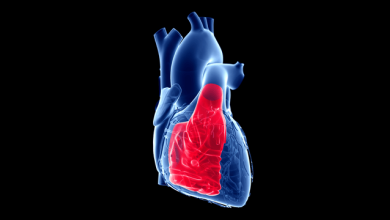Search results
Neuroendocrine System Regulatory Mechanisms: Acute Coronary Syndrome and Stress Hyperglycaemia
Author(s):
Ricardo A Perez de la Hoz
,
Sandra Patricia Swieszkowski
,
Federico Matias Cintora
,
et al
Added:
3 years ago
Article
Author(s):
George Thomas
,
Emmanuel L Bravo
Added:
3 years ago
Distinct hypertensive syndromes causing drug-resistant hypertension are increasingly being recognised. The ability to recognise these disorders has come as a result of a better understanding of their pathogenesis and the availability of sensitive and accurate diagnostic tools. The particular appeal of making the diagnosis centres around the potential curability of the hypertension, with…
View more
Author(s):
Abhiram Prasad
Added:
3 years ago
Takotsubo cardiomyopathy (TC) or syndrome was first described more than 2 decades ago by Dote and colleagues in Japan, but has since been increasingly recognised around the world.1 Takotsubo is the Japanese name for a the traditional octopus trapping pot that has a round bottom and narrow neck, resembling the appearance the left ventricle during the acute presentation (see Figure 1).2 Although,…
View more
Author(s):
Luca Di Chiara
Added:
3 years ago
Anaphylaxis is clinically defined as a severe systemic allergic reaction of rapid onset, the hallmarks of which are acute cardiovascular and pulmonary dysfunction. In anaesthetics the incidence of this severe complication is between 1:5,000 and 1:25,000, and it is one of the few remaining causes of mortality directly due to general anaesthesia. During cardiac surgery, children are exposed to…
View more
Author(s):
Chiara Di Filippo
,
Beatrice Bacchi
,
Carlo Di Mario
Added:
3 years ago
Takotsubo syndrome (TTS) is a transient form of acute heart failure that mimics an acute coronary syndrome (ACS), with comparable acute adverse outcome.1 Many hypotheses have been formulated, but the pathophysiology of TTS is still not fully understood. Recently, it was demonstrated that specific alterations in neurological response and sympathetic activation after emotional stimuli are present…
View more
Takotsubo Cardiomyopathy
Author(s):
Esha Sachdev
,
C Noel Bairey Merz
,
Puja K Mehta
Added:
3 years ago
Article
Author(s):
Mary N Sheppard
Added:
3 years ago
Takotsubo syndrome is an acute reversible heart failure syndrome, which is increasingly recognised by coronary angiography for patients with acute ‘cardiac’ chest pain.1 It is a distinct disease entity from acute coronary syndrome, although the initial presentation has similar features to either ST elevation myocardial infarction (STEMI) or non-ST elevation myocardial infarction (NSTEMI). Early…
View more
Author(s):
Martin H Deininger
,
Juergen Buttler
Added:
3 years ago
The association of electrocardiographic (ECG) abnormalities and intracerebral, particularly aneurysmal subarachnoid haemorrhage (SAH) is a well-known phenomenon. ECG alterations are observed in 50-100% of patients during the acute stage of SAH. Frequently, these effects are clinically not important. Some SAH patients, however, have structural cardiac damage with elevation of creatine kinase…
View more
Author(s):
Maki Komiyama
,
Koji Hasegawa
Added:
3 years ago
The novel coronavirus disease 2019 (COVID-19) first occurred in December 2019 in Wuhan, Hubei Province, China, and has already evolved into a rapidly expanding pandemic. The WHO has declared COVID-19, which is caused by severe acute respiratory syndrome coronavirus 2 (SARS-CoV-2), to be a public health emergency of international concern.1 Until effective therapeutics and vaccines become available…
View more
Author(s):
Martin H Deininger
,
Juergen Buttler
Added:
3 years ago
The association of electrocardiographic (ECG) abnormalities and intracerebral, particularly aneurysmal, subarachnoid haemorrhage (SAH) is a well-known phenomenon. ECG alterations are observed in 50-100% of patients during the acute stage of SAH.1-3 Frequently, these effects are clinically not important. Some SAH patients, however, have structural cardiac damage with elevation of creatine kinase…
View more












